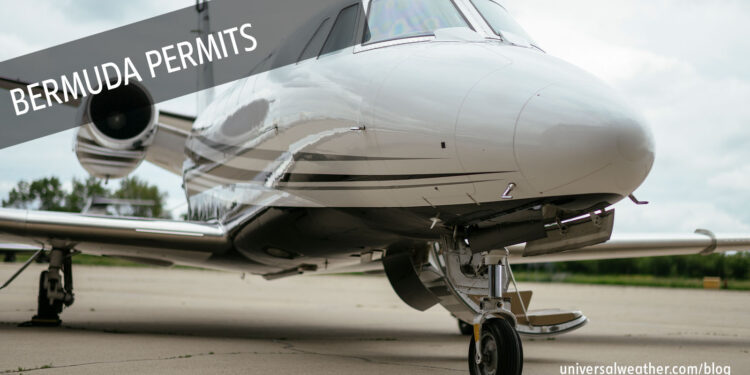Understanding Bermuda Charter Landing Permit Requirements

While there may have been some uncertainty in the past, Bermuda Civil Aviation Authority (CAA) is now clear on the requirement that all charter operations to the island have a charter permit. While the permit process at this location is not difficult, it’s important to be mindful of lead times and documentation requirements.
The following is an overview of what you need to know about landing and overflight requirements when operating to Bermuda:
1. Know charter and landing permit requirements
Bermuda is enforcing charter (non-scheduled commercial) permit requirements for charter operations to the island – as specified by Article 135 of the Air Navigation (Overseas Territories) Order. In the past it was understood that only category C and larger aircraft needed charter permits, but it’s now confirmed that permits are needed for all charter flights operating to/from Bermuda. This requirement, however, does not apply to aircraft registered in the UK and/or UK territories. Note that charter permits are not required for tech stops so long as no crew members or passengers embark or disembark.
2. Overflight permits are not required for Bermuda
Overflight permits are not needed for either charter or private non-revenue operations over/through Bermudan airspace.
3. Private non-revenue flights are exempt from permit requirements
Private non-revenue flights do not require landing permits for Bermuda.
08/04/2014: Updated by author
4. Be aware of permit lead times
Bermuda landing permits are processed by the Department of Civil Aviation. The CAA’s hours are Monday-Friday, 0900-1700 local, and the department is closed on weekends and holidays. Permit lead time is seven days, but short-notice requests are considered on a case-by-case basis. Once a landing permit request is received, it will be processed, and a confirmation will be sent. During out-of-office hours, CAA monitors e-mail requests and has the ability to process urgent landing permit requests.
5. Know required information for landing permits
Landing permit requests must include airworthiness, registration, and a copy of the air operator certificate, along with the full schedule, aircraft tail number, operator name, and full crew/passenger information. Operators must also provide a statement from their flight operations department that they’re aware of and understand the requirements of the Overseas Territories Aviation Requirements (OTAR) 91 and Article 105 of the Air Navigation (Overseas Territories) Order 2013 or the Order currently in effect. This Order applies to aerodrome operating minima. Operators must also provide a statement – on company letterhead and signed by the person responsible for the flight – that there are no dangerous goods, weapons, or munitions of war being carried on the flight. For a full list of all the required information, it’s best to speak to your 3rd-party provider. When you request permits for Bermuda, it’s important that all documentation be provided at the same time. Landing permits will not be processed unless all documents and required information are received.
08/04/2014: Updated by author
6. Permit revisions may be required
Permit revisions are needed for changes to schedule, crew, passengers, or aircraft. Once a revision is processed, a revised confirmation is sent. Best practice is to have your permit confirmation added to remarks section 18 of the flight plan.
7. SMS requirements are enforced at this location
Bermuda has implemented Safety Management System (SMS) requirements for transient aircraft. Currently, this applies to aircraft making stops at Hamilton (TXKF). Operators who land without appropriate evidence of an SMS in place or in the works are given warnings. These warnings stipulate that any future stops at this location require the operator to have an SMS.
For more on showing evidence of having an SMS in place, see SMS Implementation and Practical Considerations for Business Aviation Operators.
8. Be aware of insurance requirements
When you operate to Bermuda, your worldwide insurance policy must specify minimum coverage amounts based on the maximum takeoff weight category of your aircraft. Note that coverage must be denoted in U.S. dollars. Your 3rd-party provider will be able to furnish you with a list of the minimum insurance coverage needed.
Conclusion
Bermuda CAA is very straightforward in terms of permit processing and requirements, but be sure to provide sufficient lead time for permit requests. Also ensure that all required paperwork is submitted at the same time as your permit request.
Questions?
If you have any questions about this article or your next trip to Bermuda, contact me at johnmcclelland@univ-wea.com.




